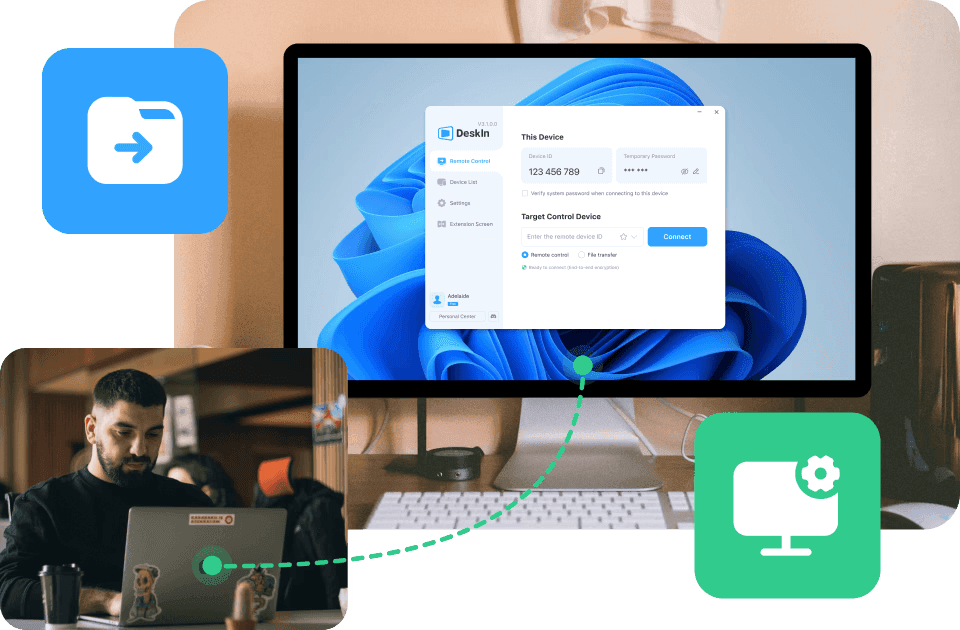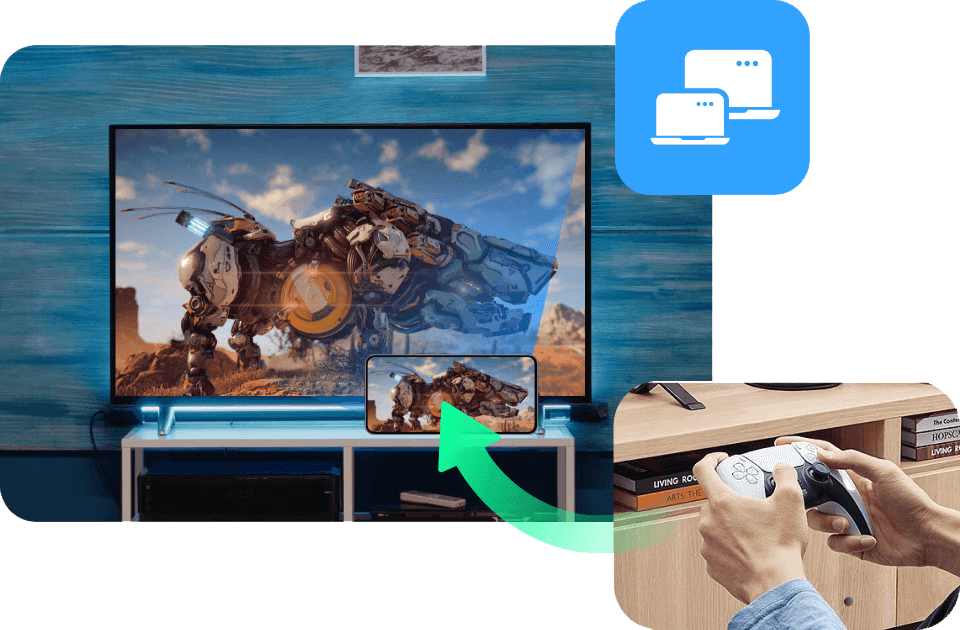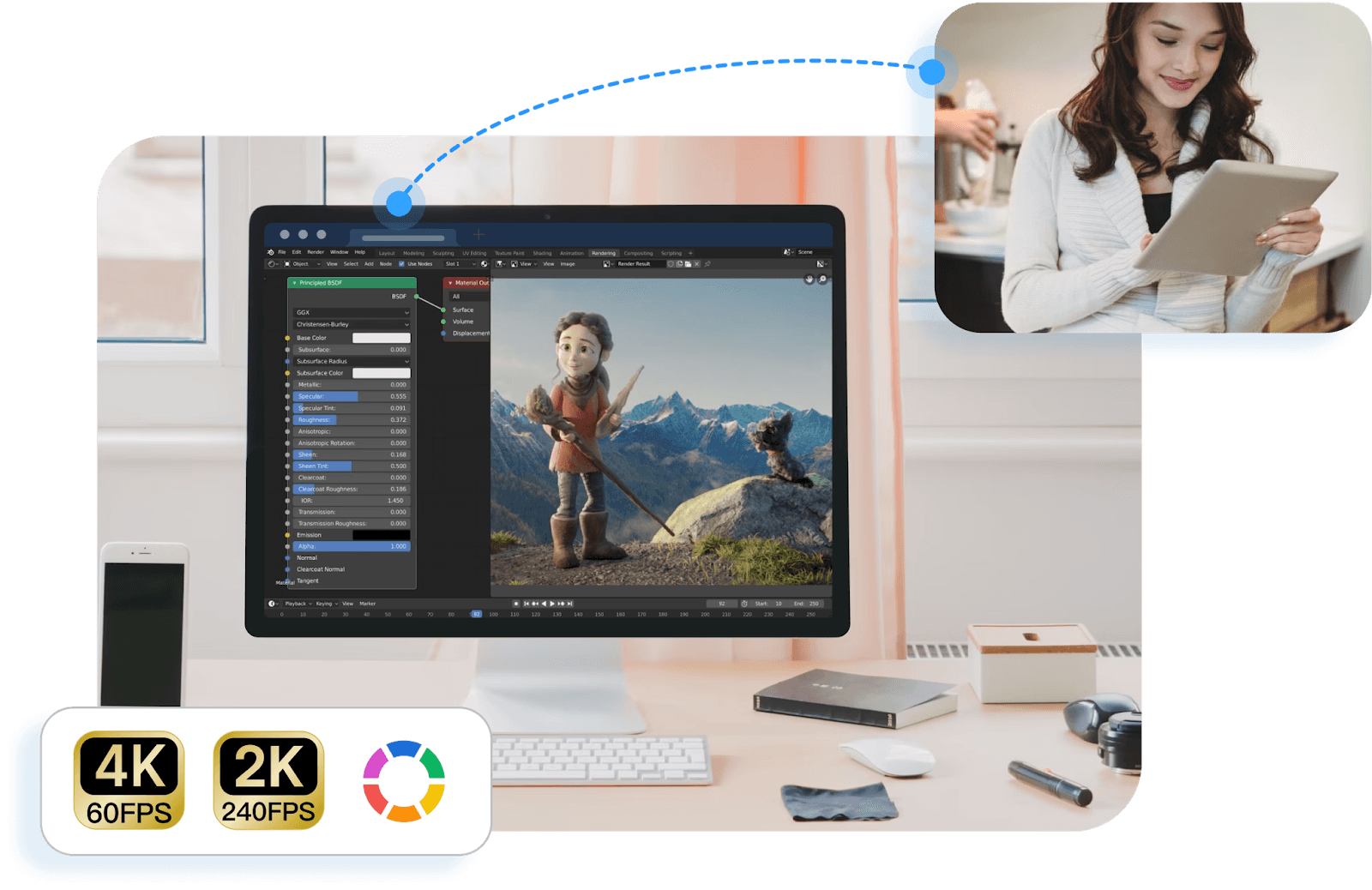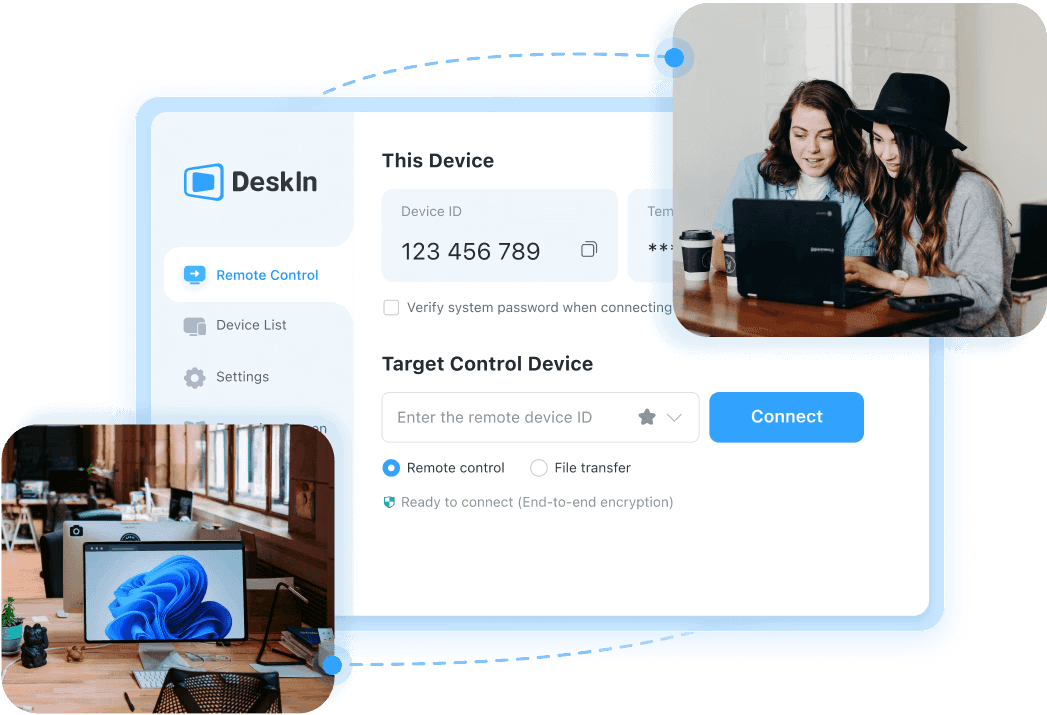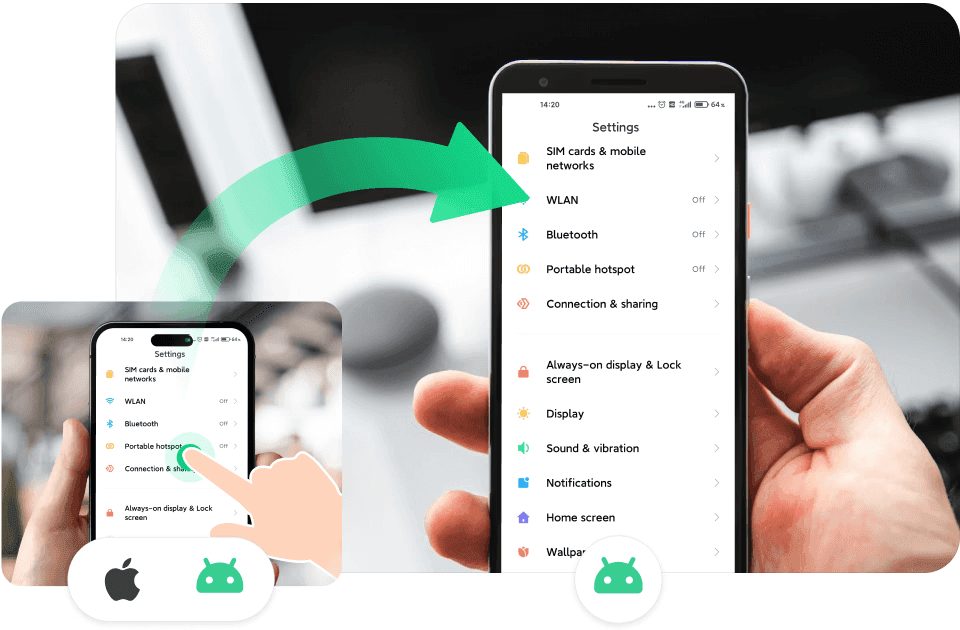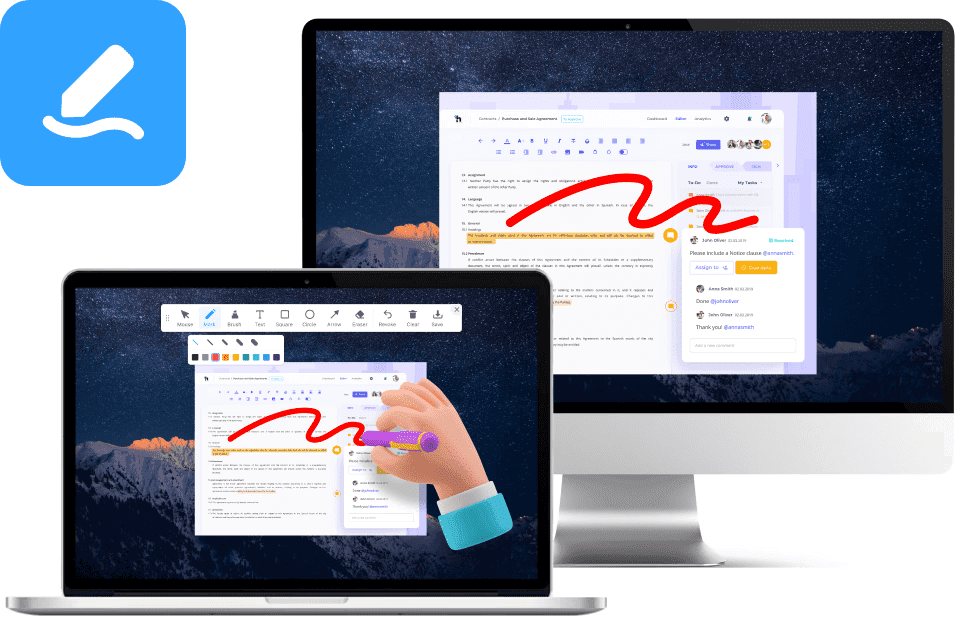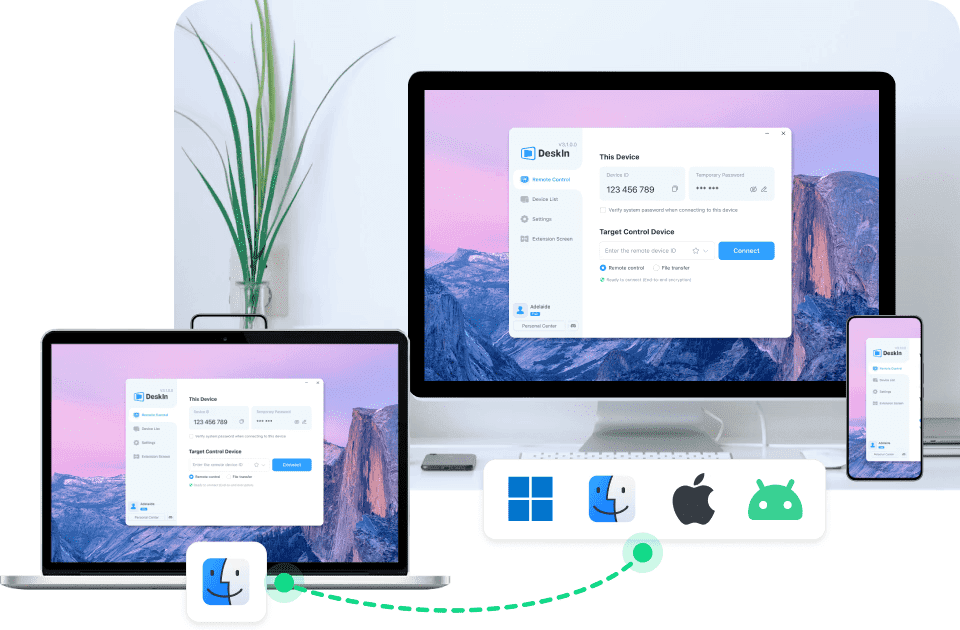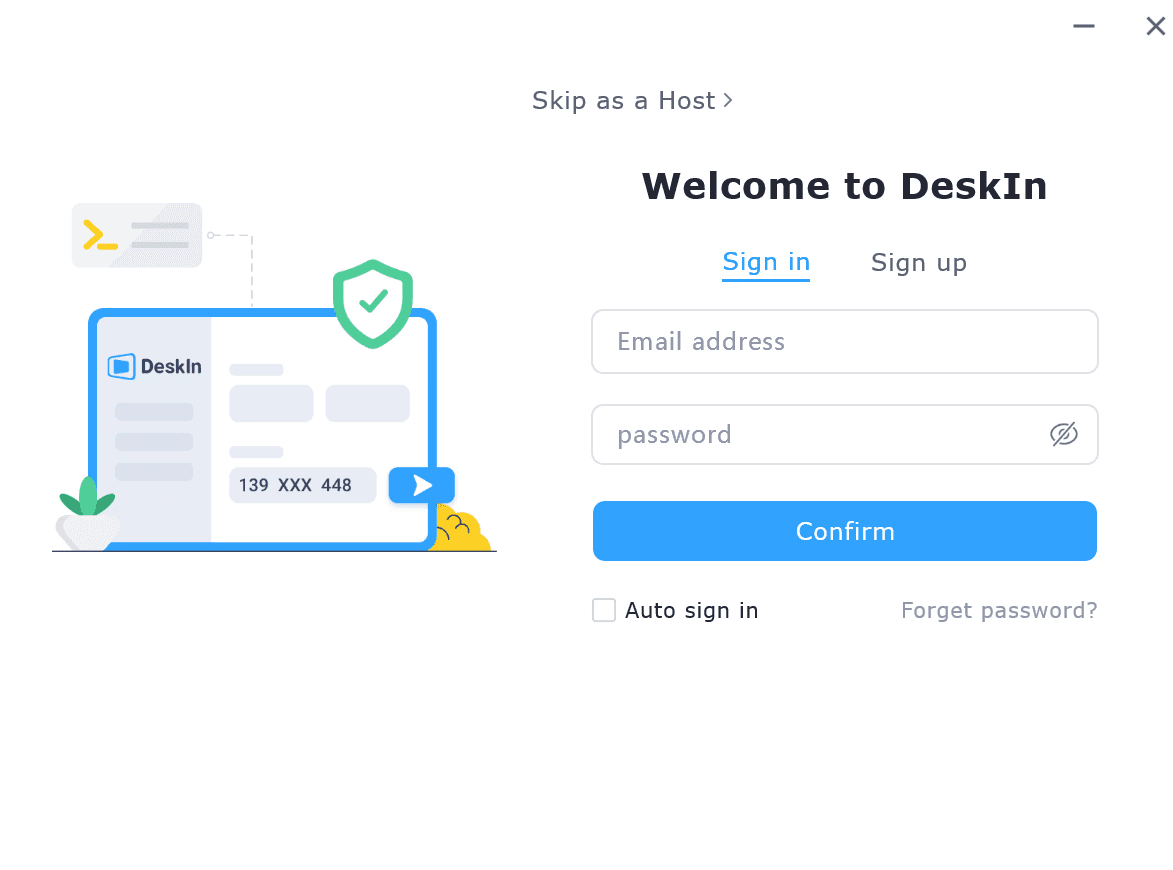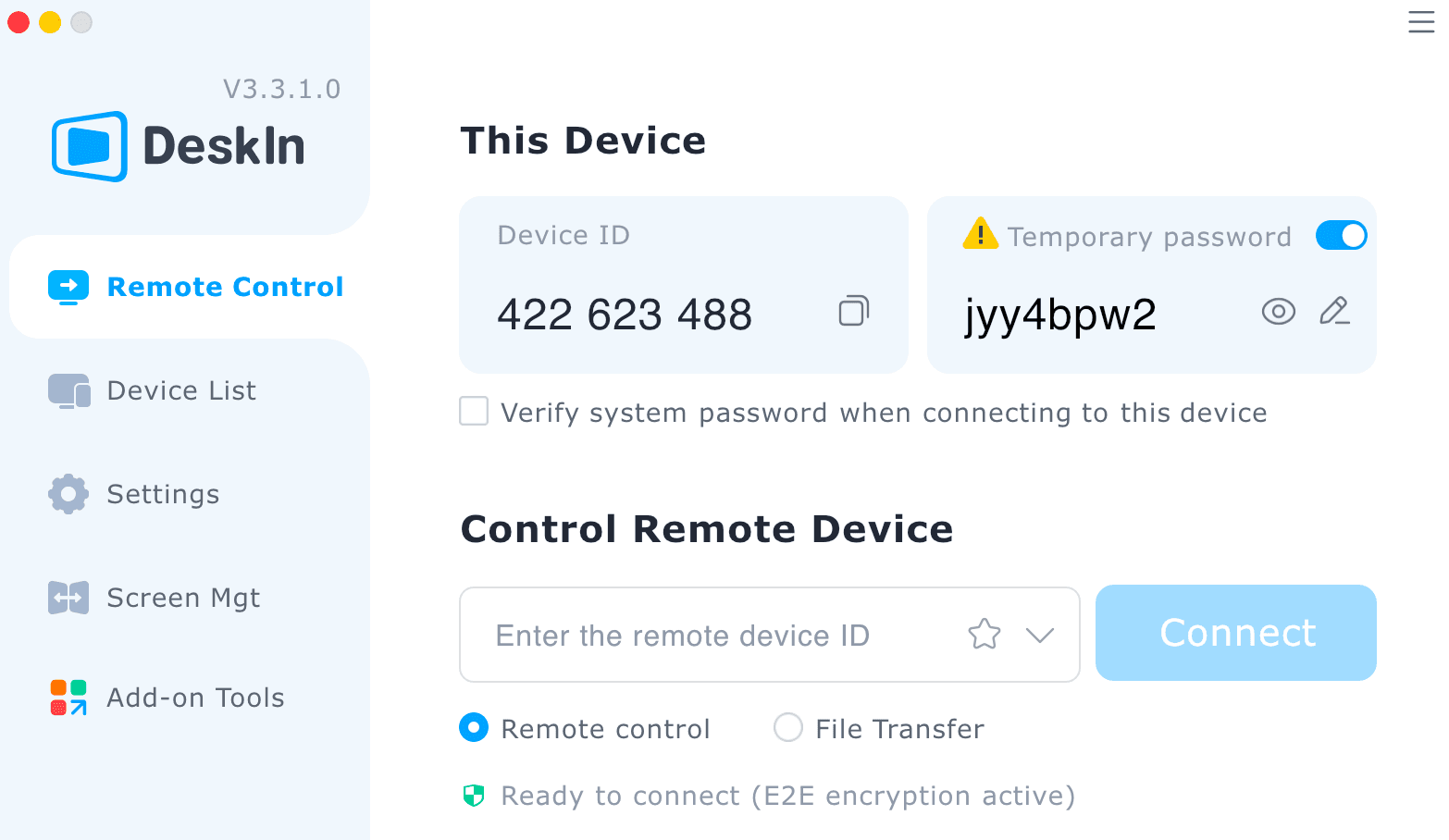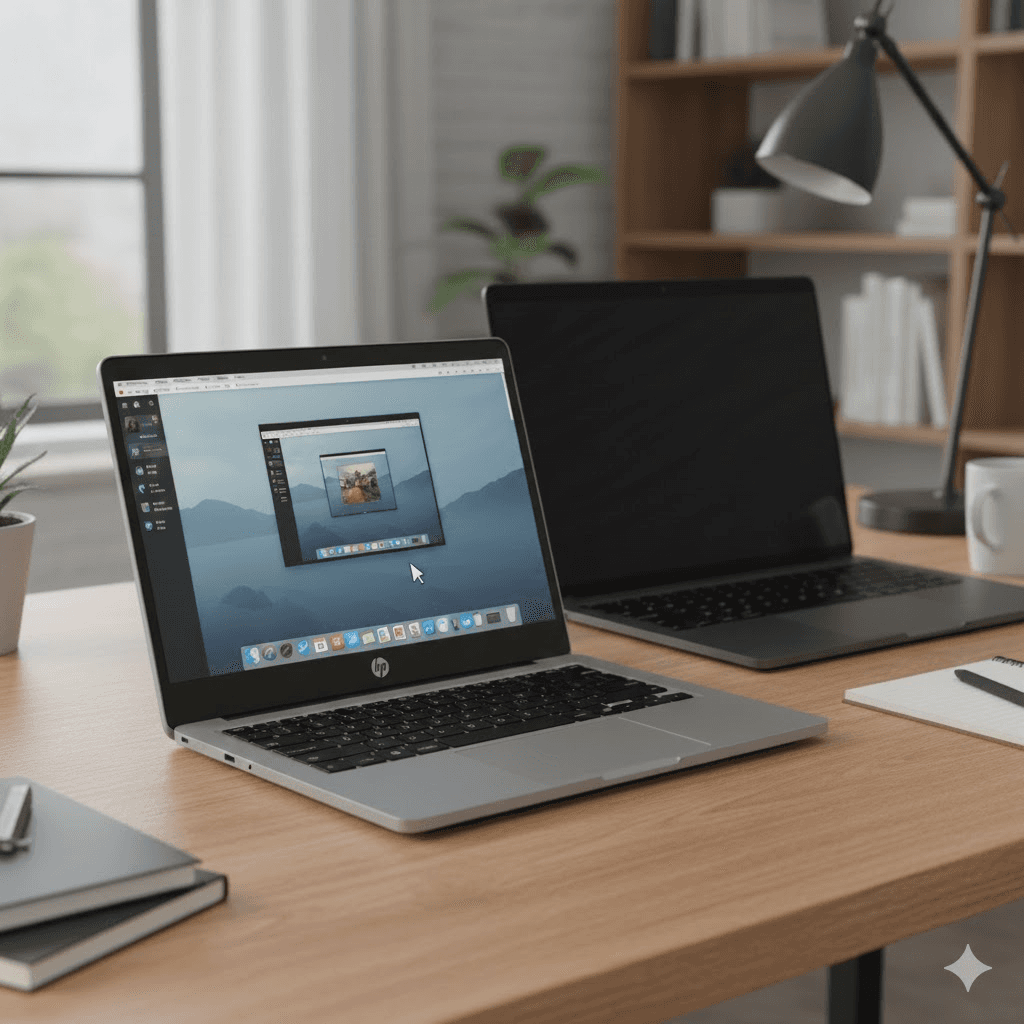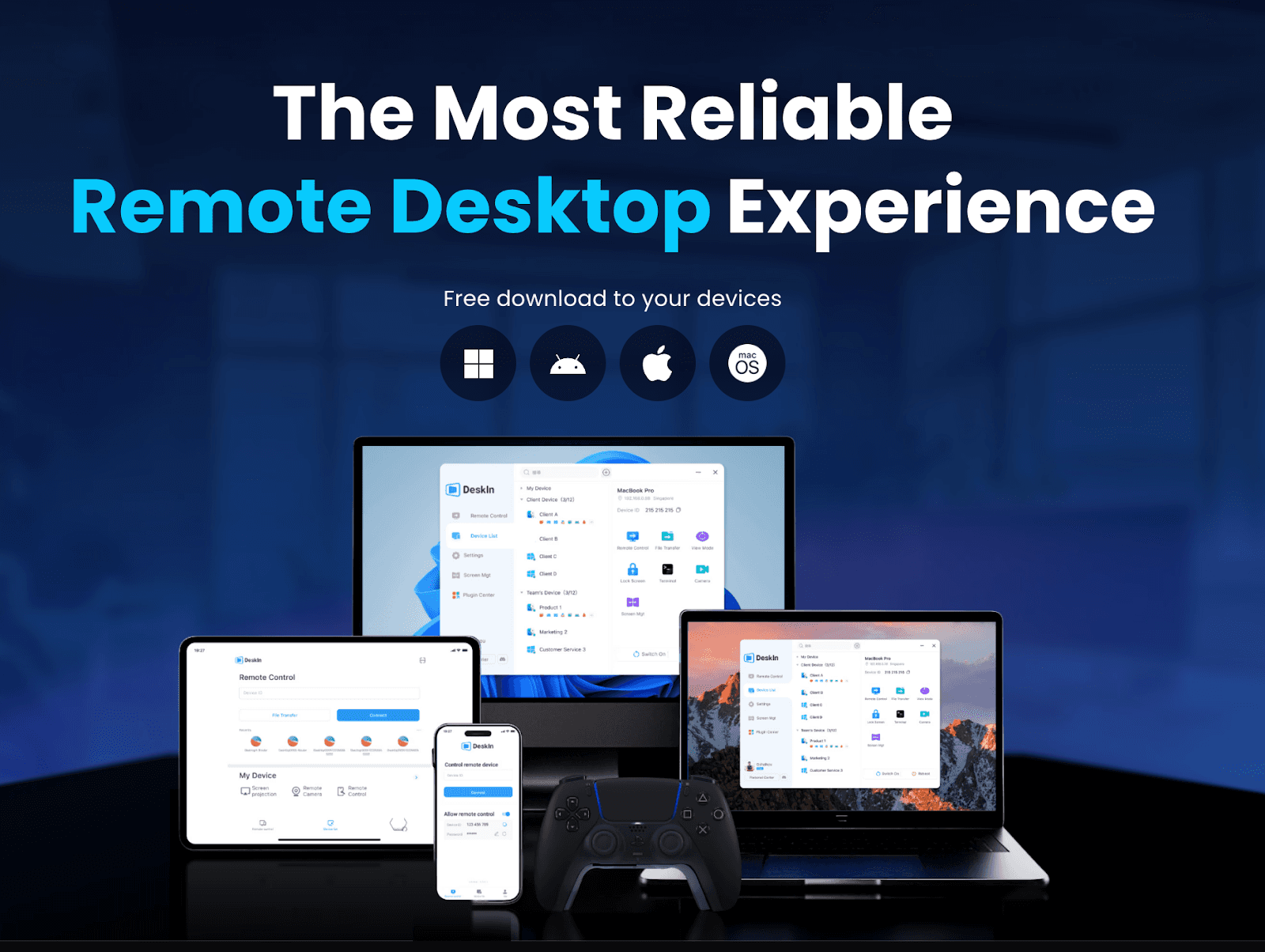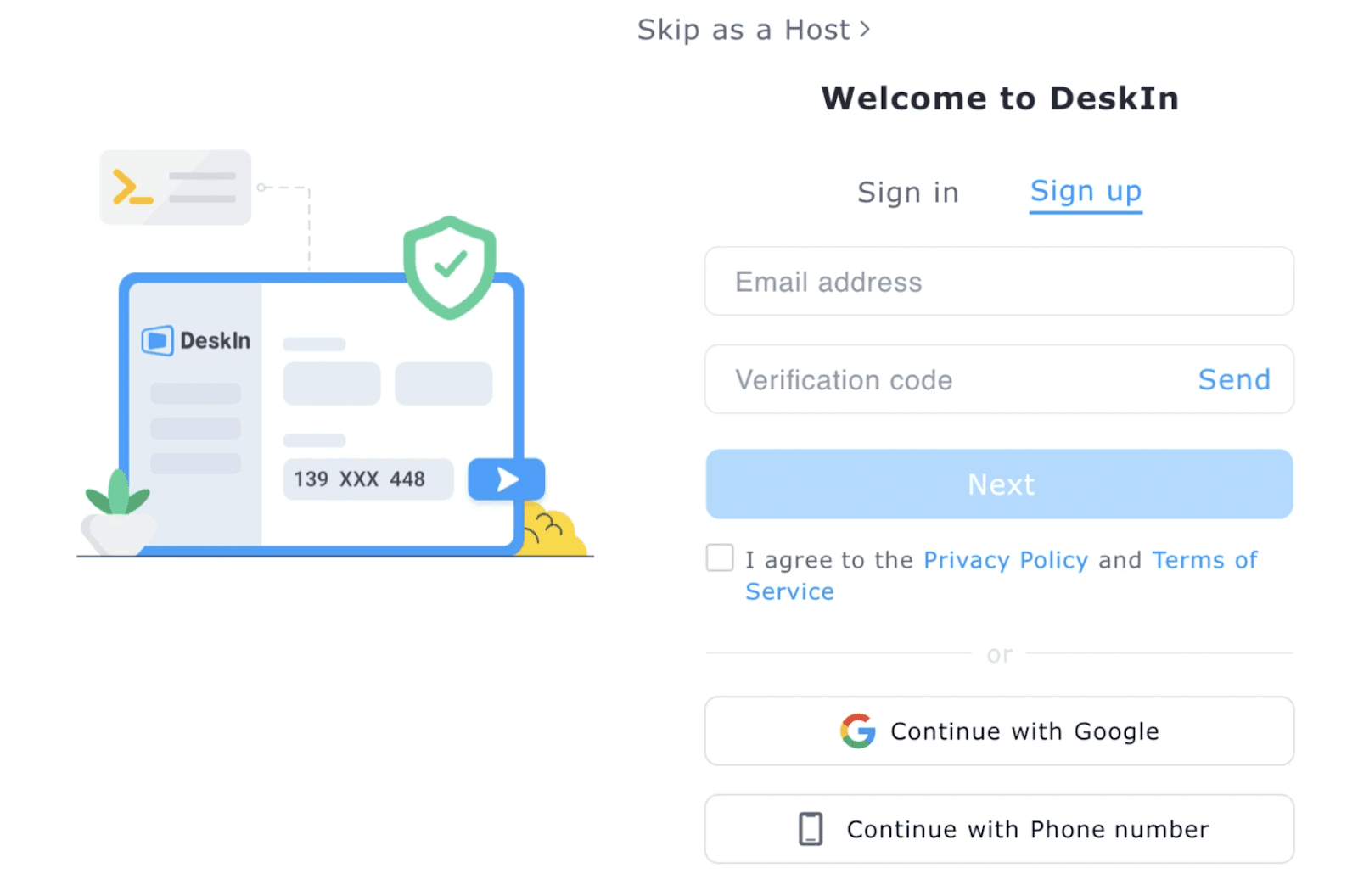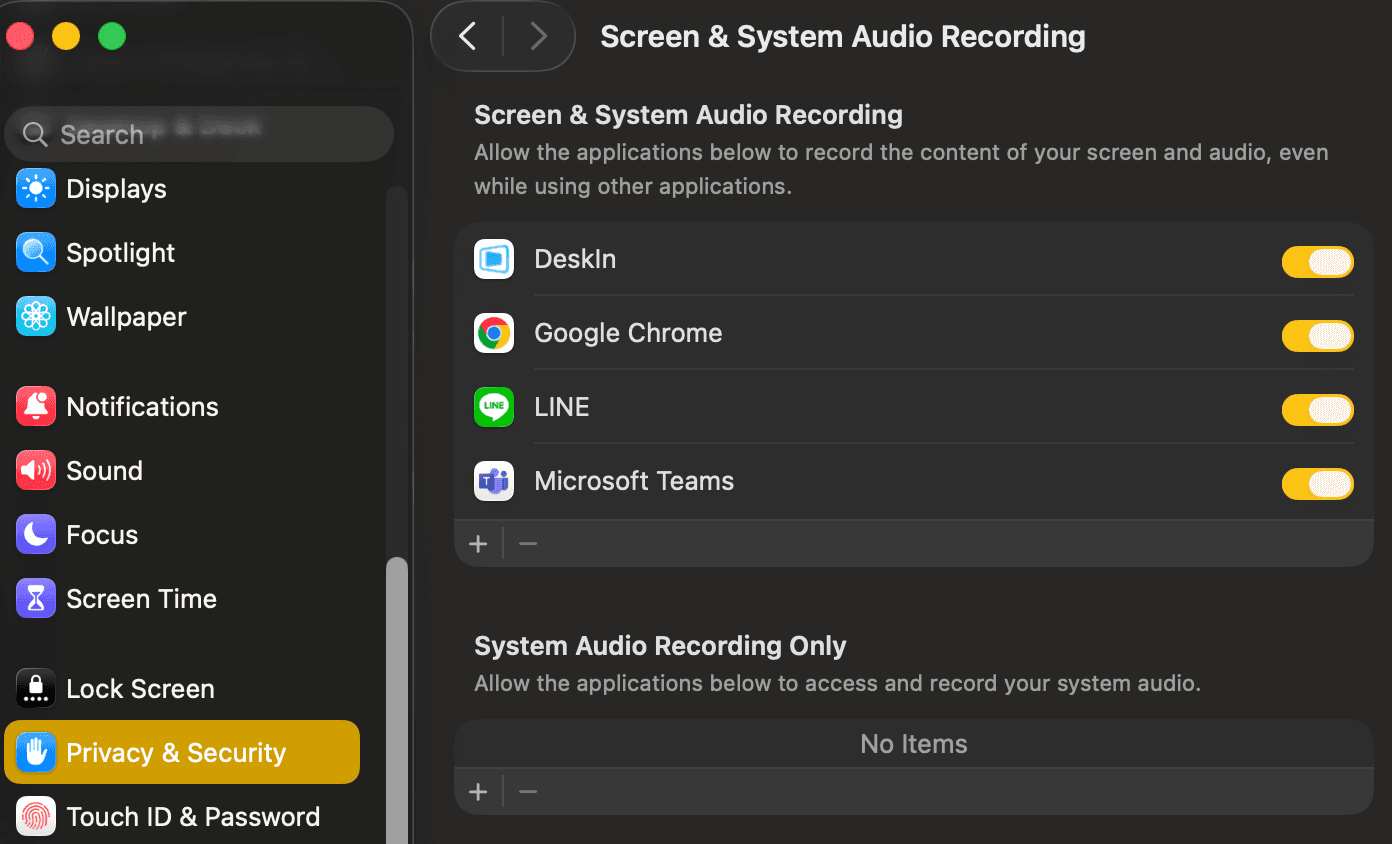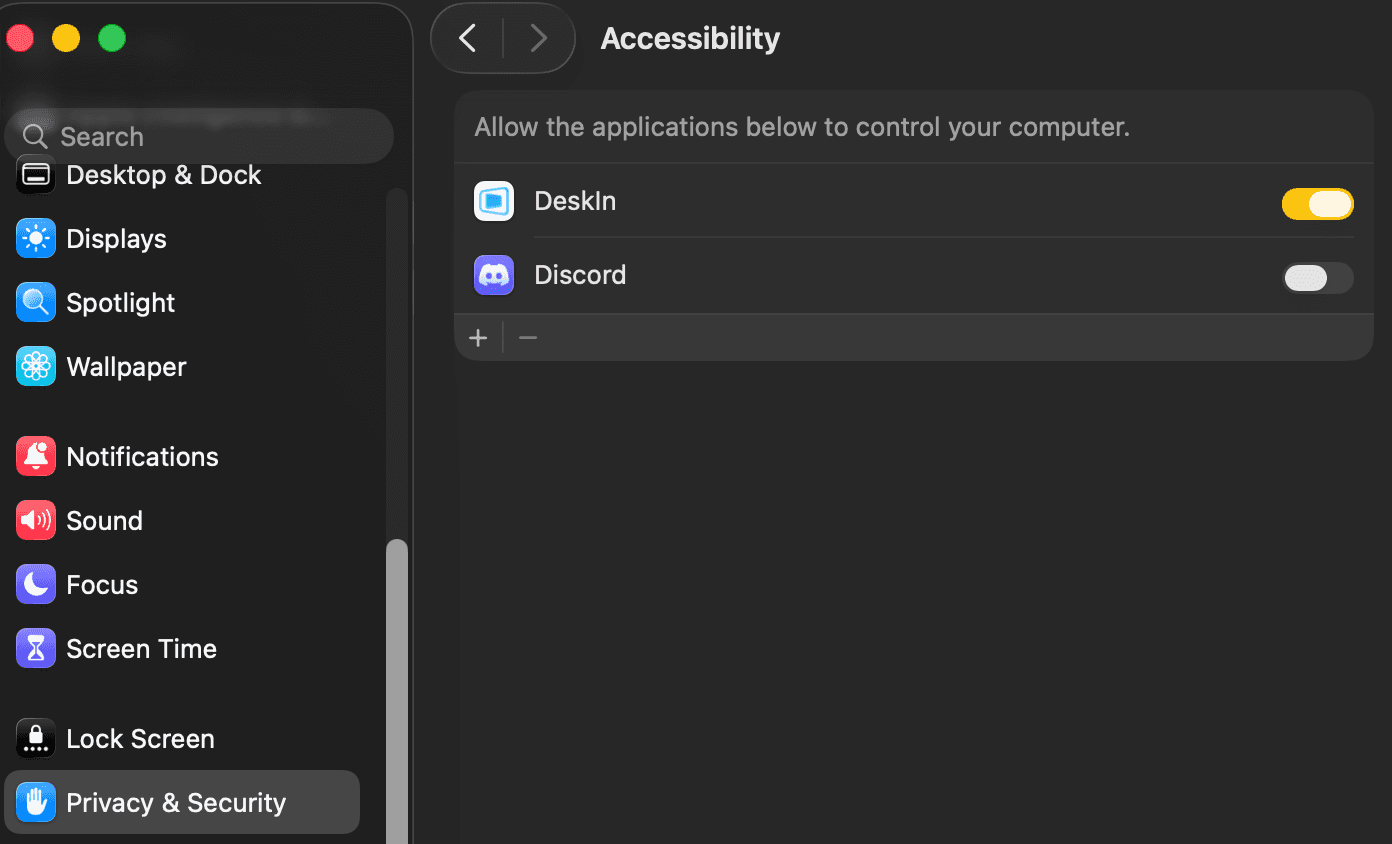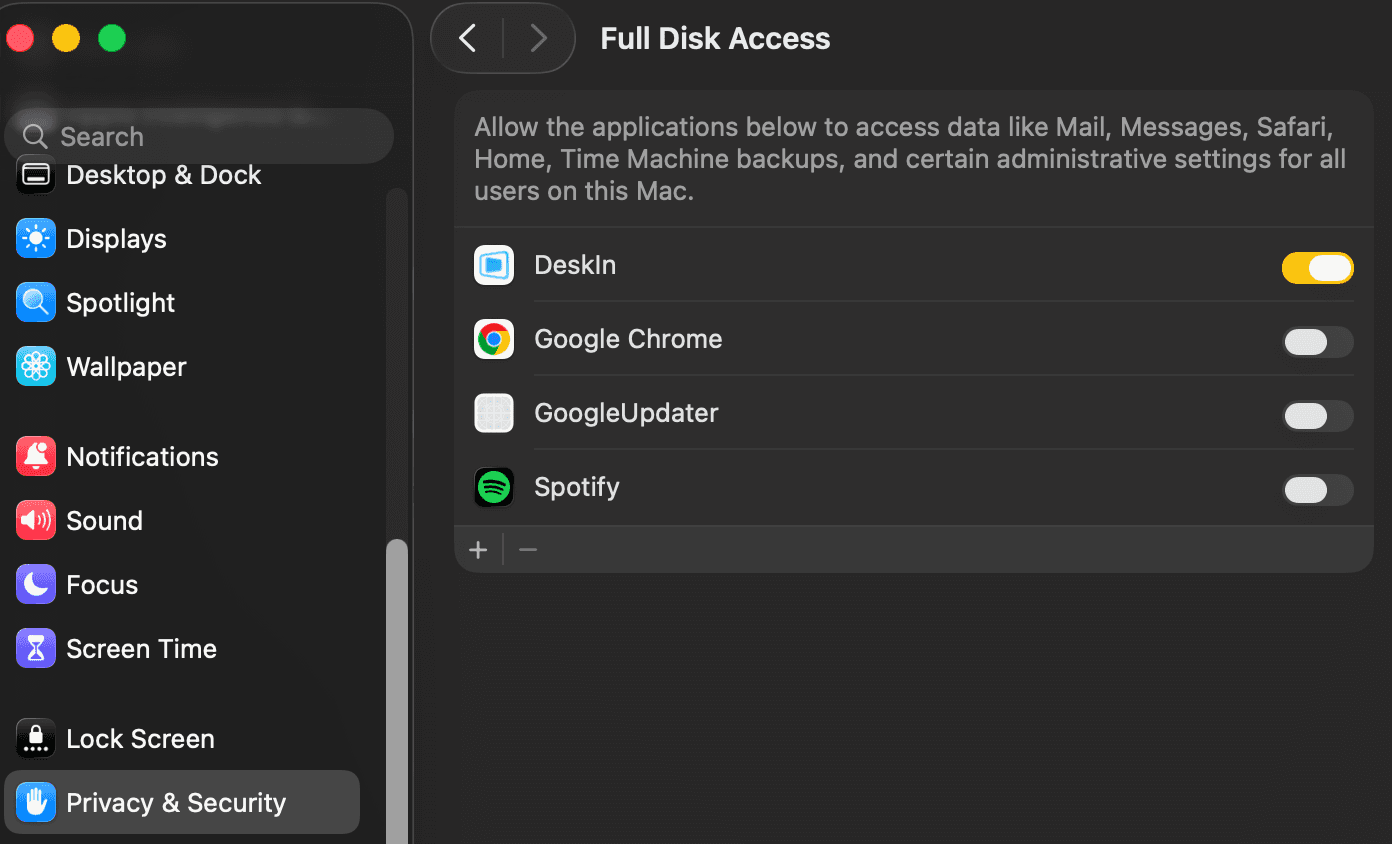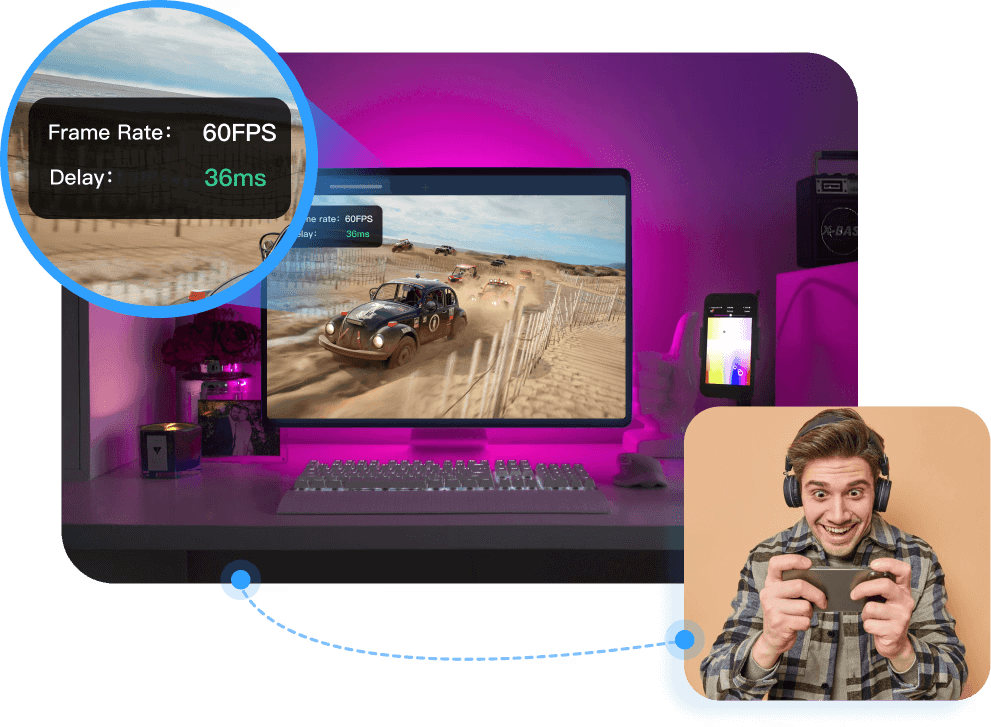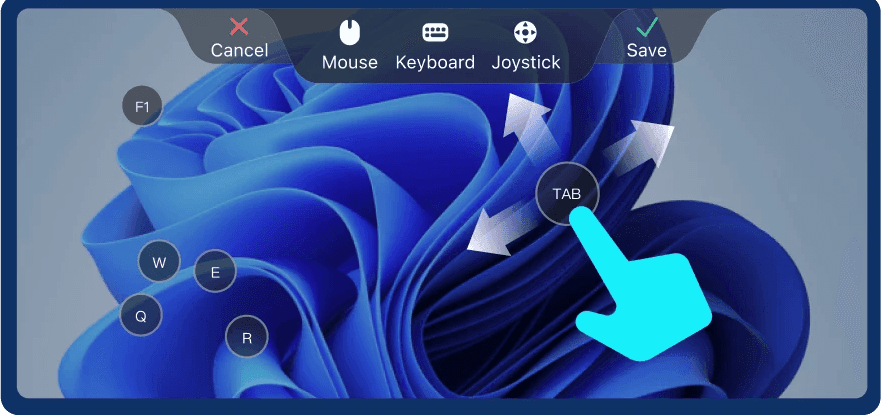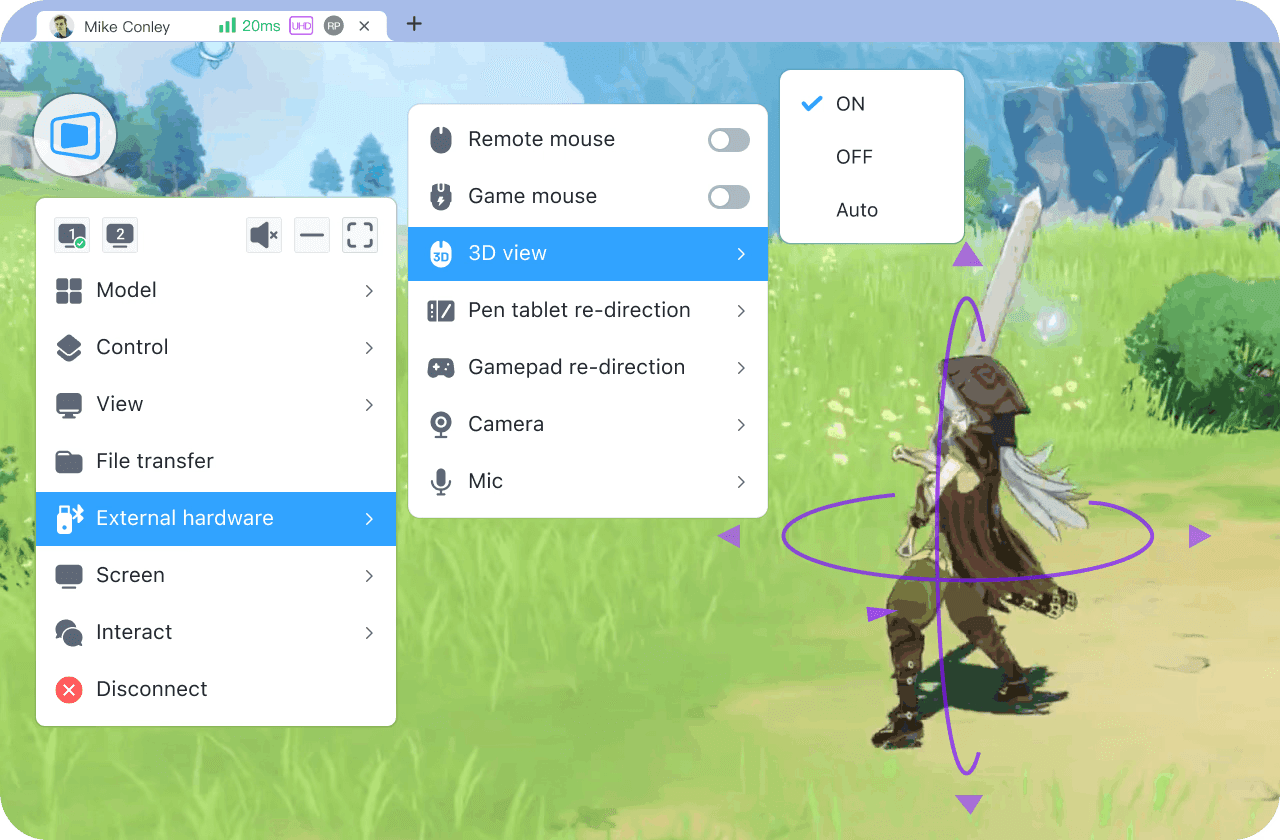Chrome Remote Desktop and Microsoft Remote Desktop are both reputable remote tools. As an individual user or enterprise user, which one better meets your needs? This article will compare their interfaces, connection methos, features, price, and security. Check it out.
1. Interface
Chrome Remote Desktop: The interface is very simple, with only two sections: remote access and remote support, making it easy to get started.
Microsoft Remote Desktop: The interface is relatively simple too, with reasonable classify functions. However, the interface is basically all-text, making it less straightforward than Chrome.
2. Connection method
Chrome Remote Desktop: connect via Access Code
Microsoft Remote Desktop: connect via IP address
3. Features
Chrome Remote Desktop: Only have basic functions, such as remote access, file transfer, etc. Not many advanced functions are available, such as multiple remote work sessions, remote wake-up, and real-time chat.
Microsoft Remote Desktop: Full-featured, it not only supports remote control and file transfer, but also supports multiple remote sessions, multi-screen display, remote printer etc.. It also provides a wealth of setting options, allowing users to personalize configurations according to their own needs.

4. Price
Chrome Remote Desktop: completely free, no paid plans. Users only need a Google account to log in and use it from the Chrome browser.
Microsoft Remote Desktop: A free version is available to individual users, but functionality may be limited. For business users, you can choose paid plan with advanced features.
5. Security
Chrome Remote Desktop: Link to Google account and its powerful security infrastructure, using network technologies such as WebRTC, and AES encryption to ensure the security of data transmission.
Microsoft Remote Desktop: uses RC4 (Streaming Encryption) encryption technology, data is encrypted using a 128-bit key, and supports TLS (Transport Layer Security), but its overall security is still open to question. However, you can add contacts to your trusted list to determine who can access your computer remotely.
6. Who is suitable to use
Chrome Remote Desktop: More suitable for individual users, small teams, or those who only need temporary connections needs and do not have many advanced collaboration needs.
Microsoft Remote Desktop: Suitable for individual users and enterprise users. For enterprises, Microsoft Remote Desktop provides rich functions and strong security guarantees, and can meet the needs of enterprise-level remote access and remote office.
More powerful and safer alternative: DeskIn Remote Desktop Software
From the above comparison we can see that both have some obvious shortcomings. Chrome Remote Desktop has fewer functions, while the security of Microsoft Remote Desktop needs to be improved.
DeskIn is a remote desktop software that combines simplicity, security and powerful functions. It has a simple and well-set interface, allowing users to easily connect to remote computers under different networks without complicated settings. High features of DeskIn:
Unattended remote access: DeskIn Supports unattended remote access, allowing users to connect and control remote devices anytime and anywhere.
High-definition: DeskIn provides high-definition screen sharing, allowing users to share only their screen without the control permission.
Audio call: DeskIn has built-in audio call feature, allowing users to better communicate with the remote side during the connection session.
High-speed file transfer: DeskIn supports cross-system, secure, and speed up to 12MB/S file transfer. Whether it is a mobile device or a computer, files can be uploaded and downloaded easily.
Multi-session: Compared with other remote desktop software, DeskIn supports multiple remote sessions simultaneously. Users can control multiple remote computers at the same time, and do quick switching by switching windows.
Cross-platform compatibility: DeskIn supports cross-platform connection between Windows, macOS, and iOS and Android.
Security: DeskIn uses 256-bit encryption technology and verification mechanism to ensure the security of remote connections. Whether it's data transmission, voice chat or file sharing, you can get comprehensive protection.
How to use DeskIn?
Step1: Install and open DeskIn on the local and remote devices respectively, register a free account and log in. For the first log in on a new device, you need email verification to keep your account safe.

Step 2: Enter the ID of the controlled device on the main control device, click Connect, you can use password connection or password-free connection to complete the verification.

After a few seconds, you can control the remote device as if it were right next to you.
Conclusion
Chrome Remote Desktop and Microsoft Remote Desktop each have their own advantages and are suitable for different user groups. As a powerful alternative, DeskIn remote desktop software provides richer functions and higher security, and is worth considering for both individual and corporate users. When choosing the most suitable remote desktop software based on your needs and budget.
Chrome Remote Desktop and Microsoft Remote Desktop are both reputable remote tools. As an individual user or enterprise user, which one better meets your needs? This article will compare their interfaces, connection methos, features, price, and security. Check it out.
1. Interface
Chrome Remote Desktop: The interface is very simple, with only two sections: remote access and remote support, making it easy to get started.
Microsoft Remote Desktop: The interface is relatively simple too, with reasonable classify functions. However, the interface is basically all-text, making it less straightforward than Chrome.
2. Connection method
Chrome Remote Desktop: connect via Access Code
Microsoft Remote Desktop: connect via IP address
3. Features
Chrome Remote Desktop: Only have basic functions, such as remote access, file transfer, etc. Not many advanced functions are available, such as multiple remote work sessions, remote wake-up, and real-time chat.
Microsoft Remote Desktop: Full-featured, it not only supports remote control and file transfer, but also supports multiple remote sessions, multi-screen display, remote printer etc.. It also provides a wealth of setting options, allowing users to personalize configurations according to their own needs.

4. Price
Chrome Remote Desktop: completely free, no paid plans. Users only need a Google account to log in and use it from the Chrome browser.
Microsoft Remote Desktop: A free version is available to individual users, but functionality may be limited. For business users, you can choose paid plan with advanced features.
5. Security
Chrome Remote Desktop: Link to Google account and its powerful security infrastructure, using network technologies such as WebRTC, and AES encryption to ensure the security of data transmission.
Microsoft Remote Desktop: uses RC4 (Streaming Encryption) encryption technology, data is encrypted using a 128-bit key, and supports TLS (Transport Layer Security), but its overall security is still open to question. However, you can add contacts to your trusted list to determine who can access your computer remotely.
6. Who is suitable to use
Chrome Remote Desktop: More suitable for individual users, small teams, or those who only need temporary connections needs and do not have many advanced collaboration needs.
Microsoft Remote Desktop: Suitable for individual users and enterprise users. For enterprises, Microsoft Remote Desktop provides rich functions and strong security guarantees, and can meet the needs of enterprise-level remote access and remote office.
More powerful and safer alternative: DeskIn Remote Desktop Software
From the above comparison we can see that both have some obvious shortcomings. Chrome Remote Desktop has fewer functions, while the security of Microsoft Remote Desktop needs to be improved.
DeskIn is a remote desktop software that combines simplicity, security and powerful functions. It has a simple and well-set interface, allowing users to easily connect to remote computers under different networks without complicated settings. High features of DeskIn:
Unattended remote access: DeskIn Supports unattended remote access, allowing users to connect and control remote devices anytime and anywhere.
High-definition: DeskIn provides high-definition screen sharing, allowing users to share only their screen without the control permission.
Audio call: DeskIn has built-in audio call feature, allowing users to better communicate with the remote side during the connection session.
High-speed file transfer: DeskIn supports cross-system, secure, and speed up to 12MB/S file transfer. Whether it is a mobile device or a computer, files can be uploaded and downloaded easily.
Multi-session: Compared with other remote desktop software, DeskIn supports multiple remote sessions simultaneously. Users can control multiple remote computers at the same time, and do quick switching by switching windows.
Cross-platform compatibility: DeskIn supports cross-platform connection between Windows, macOS, and iOS and Android.
Security: DeskIn uses 256-bit encryption technology and verification mechanism to ensure the security of remote connections. Whether it's data transmission, voice chat or file sharing, you can get comprehensive protection.
How to use DeskIn?
Step1: Install and open DeskIn on the local and remote devices respectively, register a free account and log in. For the first log in on a new device, you need email verification to keep your account safe.

Step 2: Enter the ID of the controlled device on the main control device, click Connect, you can use password connection or password-free connection to complete the verification.

After a few seconds, you can control the remote device as if it were right next to you.
Conclusion
Chrome Remote Desktop and Microsoft Remote Desktop each have their own advantages and are suitable for different user groups. As a powerful alternative, DeskIn remote desktop software provides richer functions and higher security, and is worth considering for both individual and corporate users. When choosing the most suitable remote desktop software based on your needs and budget.

Play x Work
All at Once
DeskIn Remote Game
only $14.32 USD 🎉 Limited on July 16-31
Add promo code: deskinsummer1






